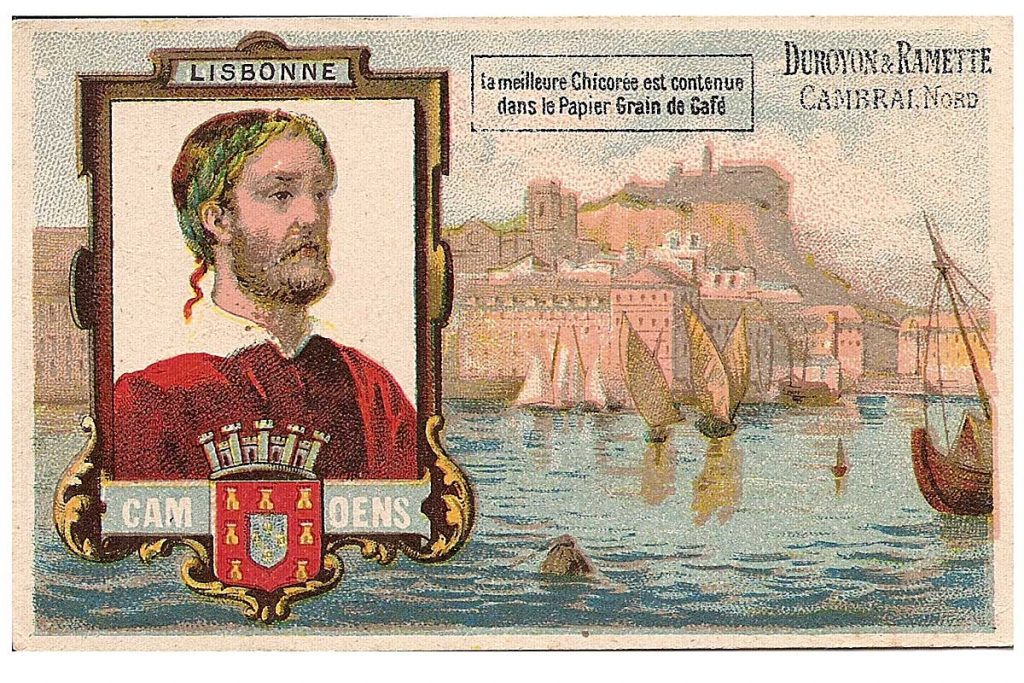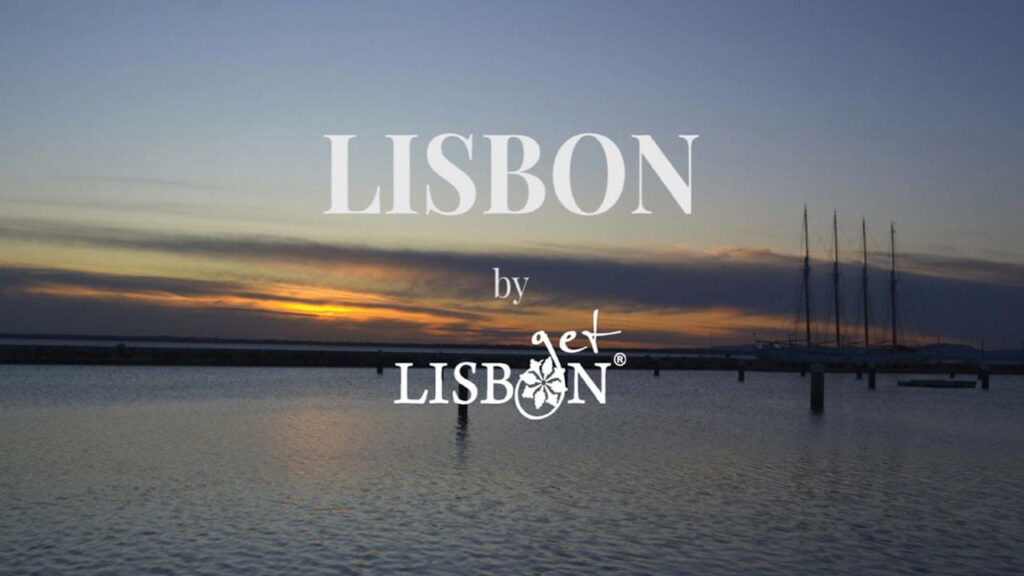Original article published on 13 June 2018
This week we suggest you a tour, an itinerary tracing Luís de Camões in Lisbon. We’ll be stopping by places where the poet left traces of his existence and also the places where those who praised him decided to immortalize him.
We needn’t introduce this Portuguese famous poet of the 16th century. His work has been translated for a long time in various languages and the quality of his writings are equated with that of the English writer William Shakespeare.
But although his work is well-known and has for many centuries originated several important studies, his life was rather obscure.
Of uncertain origins and unknown date and place of birth, Luís de Camões has long been a myth. If his existence is certain, the facts of his life are, almost always, undocumented.
Tracing Luís de Camões in Lisbon is first of all, looking for signs of his possible profile.
Get to know Lisbon’s historic neighbourhoods in a guided tour and discover unmissable places of this magnificent city.
The Profile of a Myth
He was born in Lisbon in 1524 and died in the same city on June 10, 1580. He was certainly an erudite with a classical education, as he mastered Latin, literature and ancient history, knowledge that is evident in his literary production.
He had the reputation of being an infatuated, enthusiastic and excessive man, who enjoyed bohemianism. The combative but unfortunate soldier, travelled to the East where he wrote the epic poem Os Lusíadas (usually translated as The Lusiads).
Having returned to Lisbon, it is said that he read the long epic poem to the young King Sebastião, who gave him a small income, but it is believed that the writer had financial difficulties at the end of his life. Os Lusíadas was published in 1572 with the support of the king, but his work was only valued shortly after the poet’s death. It was Philip II of Spain that promoted a meeting and the publication of the remaining writings.
The glory of Luís de Camões was only achieved later on, having been particularly exacerbated by the romanticism of the 19th century that highlighted not only his work, but also his symbolic image of a martyred genius that the ungrateful country did not know how to appreciate and value.

Although his life events are obscure and each moment of the history values him in a different way, what is certain is that his work is prominent in the western literature as well as in the identity of the Portuguese language.
This fact made his name and death date become associated with the commemoration of his own country’s day, June 10 – Day of Portugal, Camões, and the Portuguese Communities. As well as with the Camões Prize, considered the most important literature prize that awards authors of outstanding oeuvres of work written in Portuguese.
Tracing Luís de Camões in Lisbon gives you an excellent reason to experience the three funiculars in just one day!


Discovering Traces
We start our itinerary by going up the Calçada de Santana. This steep street extends more or less between São Domingos Square and the top of Santana Hill.
Located at no.139, a building way too recent to be from the time of Camões, displays a plaque from 1867 that indicates that the poet lived and died there in 1580. This is possibly the memory of an oral tradition that the owner of this property had the audacity to carve in stone.

Arriving at the top of the Calçada, we continue on to Rua do Instituto Bacteriológico (Bacteriological Institute Street). And right on our left is a building of the Institute that gives the name to this street. This was the location of the old Sant’Ana Convent, the place where it is believed that the poet was buried in a common grave. This and other less clear information is given by a plaque placed here by the City Council of Lisbon in 1935.

Less controversial is the plaque next this last one that displays Luís de Camões in profile in copper, made by the Grupo de Amigos de Lisboa that placed it there in 1972, the year of the 4th centenary of the publication of Os Lusíadas.

From here we continue towards Downtown Lisbon. You can catch the Lavra Funicular or go down the Calçada do Lavra on foot to reach Rua das Portas de Santo Antão where the Pátio do Tronco exists.
This was the location of the former Tronco Prison and here we find a memorial to Luís de Camões signed by Leonel Moura and promoted by the City Council of Lisbon in 1992.
The tiles of the tunnel leading to the courtyard value a space of a bad memory, the place where the poet was forced to remain several months after being involved in a street brawl. Perhaps one of the few documented facts of his life.


As we celebrate the 500th anniversary of the birth of Luís Vaz de Camões, it is important to understand and reflect upon the work of this significant writer and poet, as well as revisit landmarks related to him in the city of Lisbon.
At each stop along this journey, a poem or gloss by him will be read. Through his work and the places he frequented, we will witness Camões’ loves and heartbreaks, the poet’s life in the 15th-century court, the countless disputes and struggles until his departure for the East, where he wrote much of his major work: “The Lusiads.”
Feel free to email us at [email protected] to book your private or individual English-spoken walking tour led by the historian and guide Marisa Filipe, and embark on an unforgettable adventure with getLISBON.
Glorification of the Myth in the Heart of the Lisbon of the 19th Century
The glorification of Luís de Camões by the romantic spirit of the politicians and intellectuals of the 19th century was reflected in the homages and monuments erected to the poet during the commemorations of the 3rd centenary of his death.
Let’s trace him!
Now crossing Restauradores Square, let’s enjoy one more trip in another of the traditional Funiculars that help make it easy to cross the steep slopes of this city of Seven Hills, this time the Gloria Funicular. After that we go down Rua da Misericórdia to arrive at our destination, the Camões Square.
The monument erected here was due to the initiative of prominent intellectuals who in 1867 inaugurated it with the presence of King Luís and his father Fernando.
It is a sculptural ensemble constituted by a bronze statue of the poet that sits on an octagonal pedestal. Each of the vertices exhibits a statue of a remarkable figure of the national culture. Among them are: Fernão Lopes, João de Barros, Vasco Mouzinho de Quevedo, Gomes Eanes de Azurara, Francisco Sá de Meneses, Fernão Lopes de Castanheda, Pedro Nunes and Jerónimo Corte-Real.
The authorship is the romantic sculptor Victor Bastos (1830-1894) that also created the top level sculptures of the Triumphal Arch of Praça do Comércio.
Also read Unique Toponymic Plaques of Lisbon where we talk about several curious plaques including the one in Luís de Camões Square.

Now we invite you to continue along Rua do Loreto until you turn left into Rua Marechal Saldanha. Down the street you can find the Alto de Santa Catarina Garden, mostly known as Miradouro do Adamastor (Adamastor Viewpoint).
Here there is a stone sculpture representing the personification of the Cabo das Tormentas (Cape of Storms) in the form of the giant Adamastor created by Luís de Camões in Os Lusíadas. Made by the sculptor Júlio Vaz Júnior, it was promoted by the City Council of Lisbon in 1927.

Our suggestion is to once again experience another emblematic funicular of Lisbon, the Bica Funicular. Go down until Rua de São Paulo and go to Avenida 24 de Julho where tram 15 will take you to Belém.
| Never miss another article | Subscribe here |
Belém, Luís de Camões in Jerónimos Monastery
The culmination of the celebrations and homage of the 19th century to the martyred hero took place in 1880 with the transfer of the hypothetical remains of Luís de Camões to the Jerónimos Monastery.
Here is (perhaps another) Luís in a magnificent Neo-Manueline style tomb with an effigy, parallel to an identic one in style and shape. Vasco da Gama, the navigator responsible for the discovery of the maritime route to India, rests by his side. Curiously, his name was immortalized by Camões in his epic poem Os Lusíadas.
Two important personalities of the Portuguese Renaissance, with a prominent place in the Jerónimos Monastery, a place that is nothing less than the Royal Pantheon of the Second Dynasty.
Although in the Church of Santa Engrácia, National Pantheon since 1966, there is a cenotaph, a funeral memorial, also dedicated to the poet, its distance and its relevance did not justify including it in this itinerary.

The places where Camões has passed by, documented facts or legends and the monuments of all times in his honour, actually served as an excuse to get to know better some of the corners of this city. As for the poet, his existence is present in his work, which overlaps with all myths.
Our goal of tracing Luís de Camões in Lisbon is now accomplished in a different and more curious perspective, allowing our reader to know some particularities associated with him and at the same time to make a pleasant stroll.
Oh, and since you’re in Belém, why not finish with a visit to the famous Pastéis de Belém? After this walk you definitely deserve it! 🙂
The project getLISBON has been very rewarding and we want to continue revealing the singularities of fascinating Lisbon.
Help us keep this project alive!
By using these links to make your reservations you’ll be supporting us. With no extra costs!
• Looking for a different experience? We can create a customised itinerary based on your interests. Contact us!
• Or if you prefer tours and other activities in various destinations, take a look at GetYourGuide.
• Save time and money with a flexible Lisbon Card!




